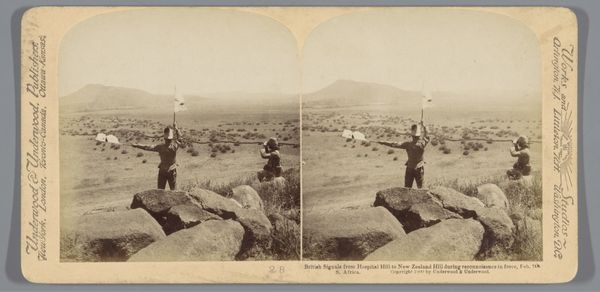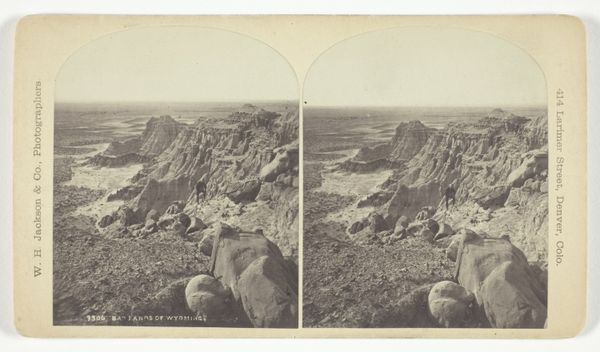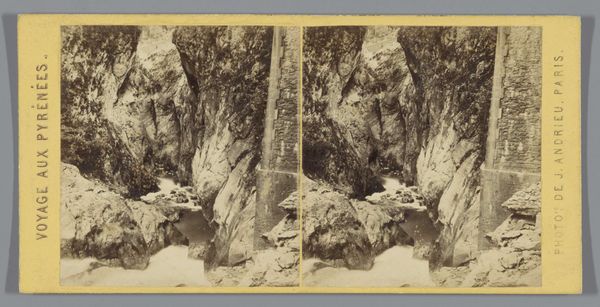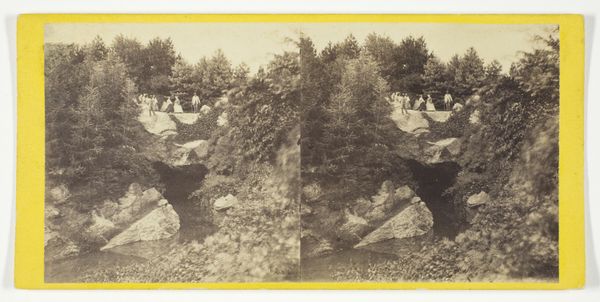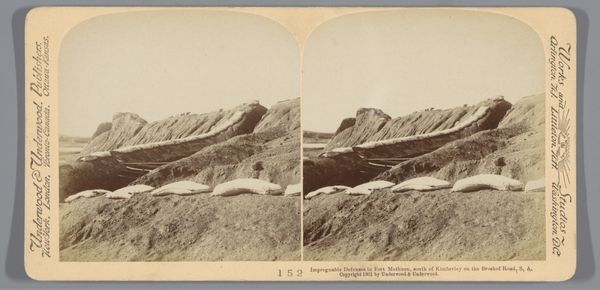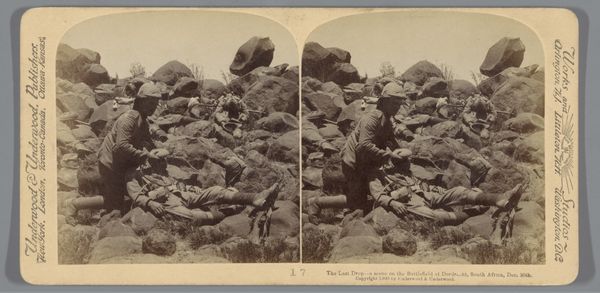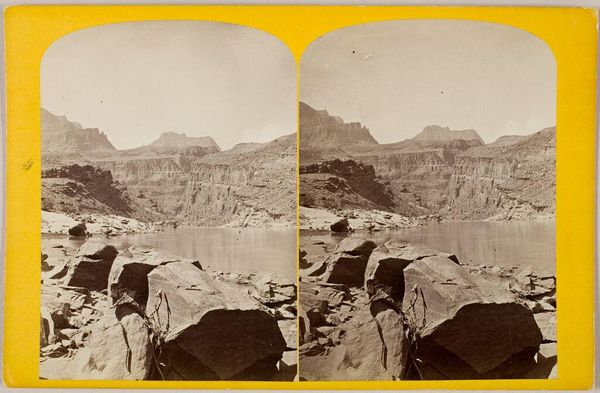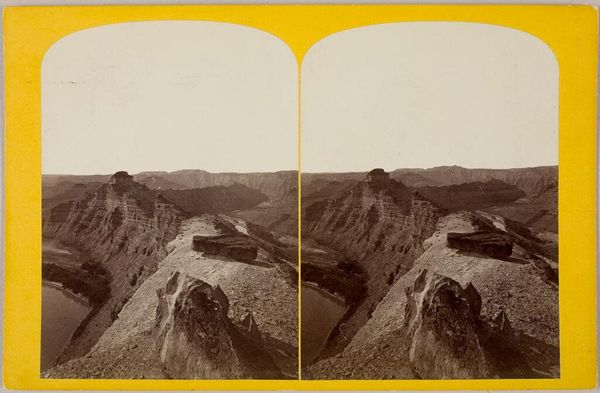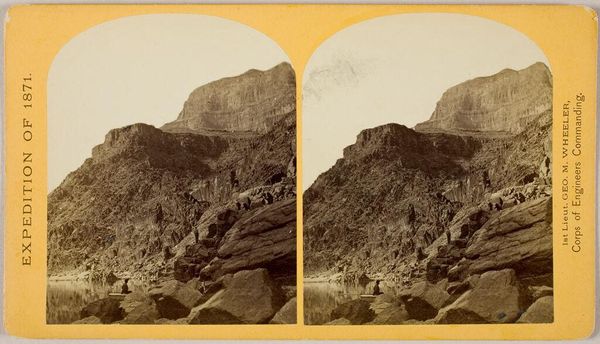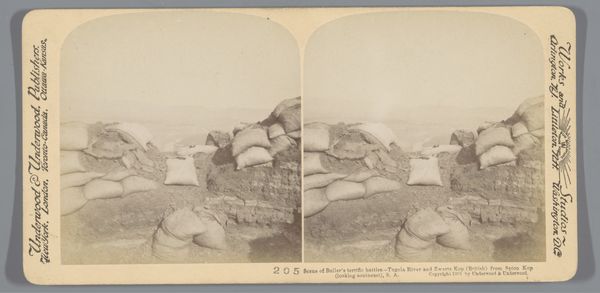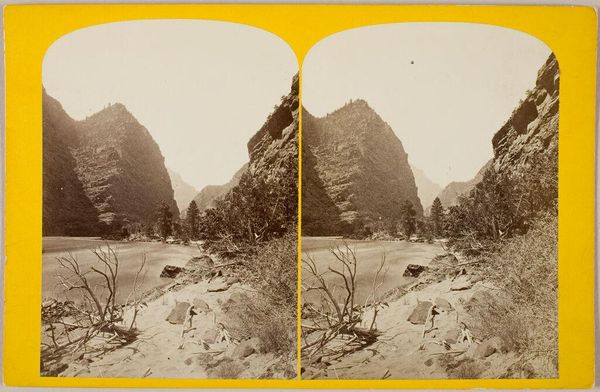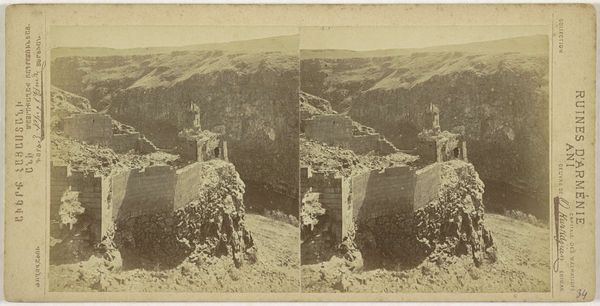
silver, print, photography, gelatin-silver-print
#
16_19th-century
#
silver
# print
#
landscape
#
photography
#
gelatin-silver-print
#
19th century
#
history-painting
#
academic-art
#
realism
Dimensions: 10 × 7.5 cm (each image); 10.7 × 17.7 cm (card)
Copyright: Public Domain
Editor: Here we have a stereo photograph titled "Golgotha and the Crucifixion," made by H.H. Bennett in 1893. It’s a gelatin silver print, quite small and sepia-toned. It depicts what looks like a theatrical recreation of the crucifixion scene. It strikes me as… odd, this blending of religious subject matter with early photographic technology for mass consumption. What stands out to you? Curator: It's fascinating to consider this image as a product, rather than purely as devotional art. Let’s focus on its materiality. The gelatin silver print process allowed for relatively easy and affordable reproduction, right? How does that accessibility change the way we engage with the scene of the Crucifixion itself? Editor: I see what you mean! Before this, you’d need a painting or print, far more laborious. Photography democratizes it, bringing a visceral scene to a broader audience. Is it exploiting or exploring faith at this point? Curator: Precisely. And consider the labour involved in its production. Someone had to pose these figures, set up the landscape… recreate the sacred for a popular panorama first, then re-photograph that. Do those layers of mediation – the construction of the tableau, its photographic reproduction, the distribution process – influence our perception of religious devotion? Editor: So, you're asking if this image is a work of faith, or of labor? Possibly both, intertwined through the capitalist machine of the 19th century? It definitely muddles any sense of pure piety I might expect. I had never thought of approaching religious imagery this way! Curator: Exactly! The tension between the sacred subject matter and the very material, commercial realities of its production opens up important questions about the commodification of belief and how artistic labour intersects with broader social and economic forces. I appreciate how this examination illuminates the material processes shaping the artwork.
Comments
No comments
Be the first to comment and join the conversation on the ultimate creative platform.
